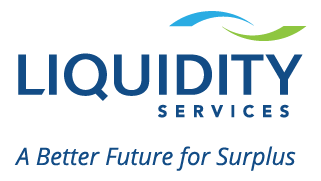Valuing capital assets provides accurate and timely information to better understand how to capture the enduring value in underperforming or idle assets. If an organization does not effectively practice asset valuation, it could be drastically under-representing its actual worth. Additionally, business leaders may be sitting on potential revenue streams that could be reinvested into the organization. Therefore, asset valuation not only improves the business, but also increases revenue, providing much needed breathing room on balance sheets.
Organizations need to understand the whole picture before beginning the asset valuation process, as proceeding to sell your assets without first understanding their value leads to missed opportunities to extract more value from surplus. With the right partner and technology that delivers access to real time data, organizations can improve their outcomes. Here are some helpful tips that will make the difference between getting short-changed and maximizing profit.
Preparation
While business leaders and managers can jump into the asset valuation process without accurate market data, this often creates confusion and increases the risk of failure. Instead, organizations need to identify an asset valuation partner armed with the expertise to accurately and consistently value its assets. For example, AssetZone®, a web-based asset management tool, tracks the economic life and value of a wide variety of products, equipment, and machinery.
Empowered with asset management software, managers and staff members need to collect every detail that will contribute to the value of an object. They should consider if an asset is in use, how often that takes place, who uses it, its age, its external appearance, its ability to complete its task and its manufacturer. Additionally, photographing an asset can serve as a useful tool for any future managers or employees, as well for the organization’s asset management partner.
Valuation
With the descriptions of each asset existing in asset management software, the next step is to generate a detailed report for every item in the organization’s possession. This differs from the preparatory phase because asset management partners will assist in compiling accurate values using industry and market insights.
First, business leaders and managers need to calculate the total cost of ownership for each asset. Metrics should include how often the asset is used, what it generates, and if there are any associated costs with maintenance, such as insurance. Additionally, the total cost of ownership of an object can be determined by detailing how much revenue is spent on the space required to store the item. This is especially important for surplus and unused assets if they are stored in the facility or storage space. It’s important to keep in mind that beyond the cost of storage, idle assets point to missed opportunities for space for a more usable asset for the business.
With fluctuating economies around the globe, the value of an asset relies on current financial atmosphere in which it exists combined with market data that details an item’s worth in a specific industry. Global asset management partners have the market data and the experience, expertise, and connections to interpret that data and ensure that assets are valued accurately.
Leveraging data
After creating valuation reports, use the information to answer the question: Should the surplus equipment be redeployed or sold?
For redeployment, organizations should consider the costs of storage and the cost to transport the asset compared to the price of purchasing a similar, new item. If shipping outweighs the asset sale value, a number which should be generated by a valuation report, then it’s better to sell the asset in the secondary market through an established vendor with trusted online marketplaces and a global base of buyers. Hopefully, the company is also using Web-based asset management software to determine which facilities are in need of the surplus equipment..
If the asset is worth more through sale, business leaders should rely on international reverse supply chain vendors and their marketplace expertise. The global solution provider will determine the best geographical location and industry to market the items to deliver maximum value for each surplus capital asset.
Asset valuation is more than good business practice; it enables business leaders to transition idle and unused equipment from a burden into a liquid opportunity.



Comments are closed.